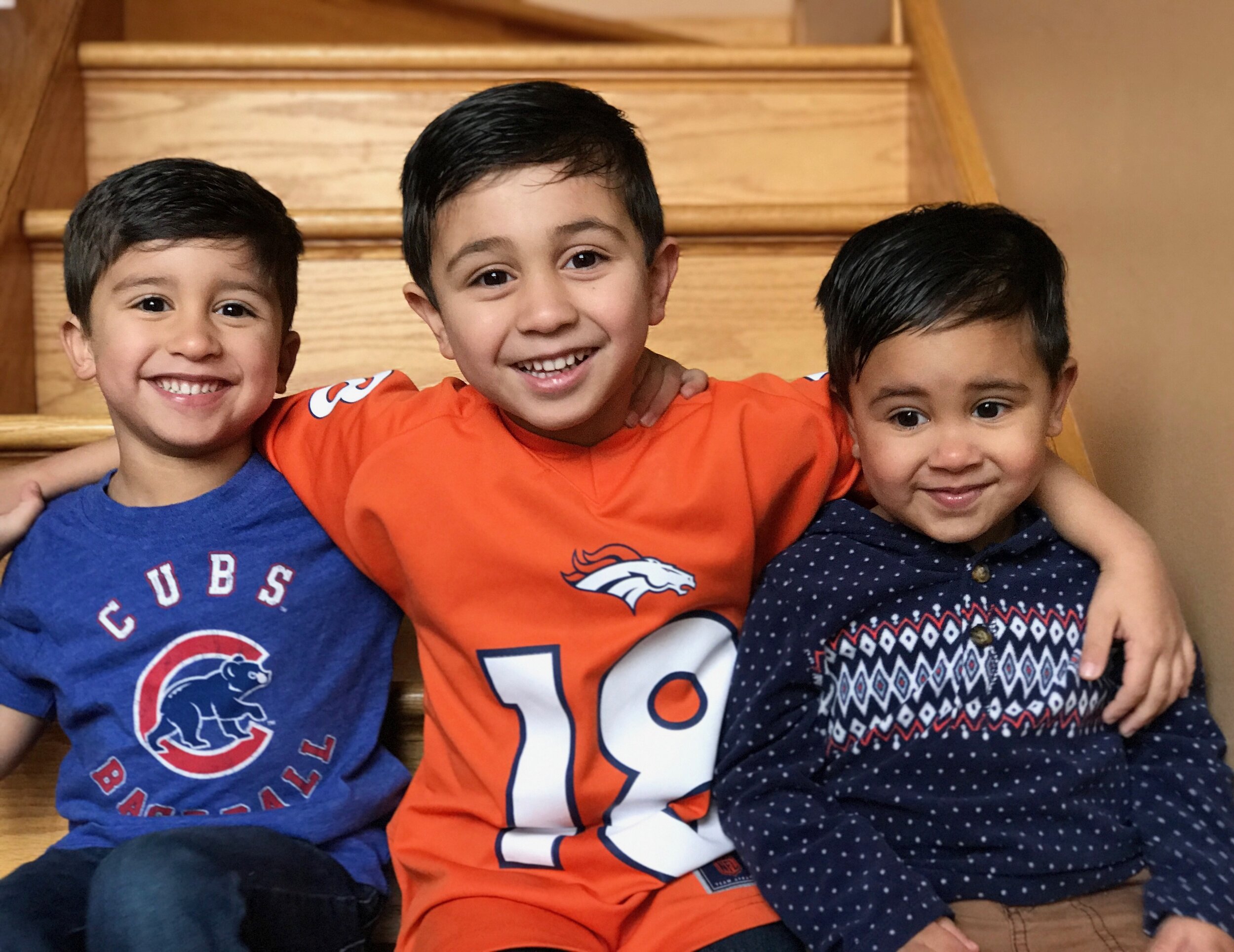How To Raise Bilingual Kids

One thing many multiethnic families are trying to figure out is how to teach their child multiple languages. Sometimes, it seems too hard, so parents drop a language. Most of the parents I've talked to that have done so regret it. They wish they would have taught their child to be bilingual from the very beginning.
What about you?
Are you teaching your child multiple languages? Are you nervous how to do it? Do you want some advice? If so, here are some tips to help your family raise bilingual children.

Tips For Raising Bilingual Children
Start Young
Start talking to your child in both languages right away. People tend to think it will create confusion, but statistics are showing that children are more successful in learning both languages when they start young.
Family Agreement
You and your spouse need to be on the same page. It will be much more challenging to teach your child to be native in both languages if one of you wants to teach your child a second language and the other doesn't. When you're both on the same page, you'll be more proactive in teaching them.
Make A Plan
After you've made the decision, you need to make a plan. Every bilingual family looks different. While your child will be able to speak multiple languages, they could be dominant in one. You need to decide what your family wants. If you want your child to be native in both languages, your lifestyle will need to reflect this.
This could mean you ask family members to only speak their native language to your child and have them respond in the same language. Think about how you can make it happen and make a plan your whole family can follow.
Don't Panic
Take a deep breath and don't panic. Teaching your child to be bilingual takes time. They might start to mix languages or take a little longer, but it's ok. Encourage them as they go and don't rush them.
Learn your stuff
Read up on bilingual families. Look on Amazon or your local library to find resources and hear from other families just like yours. The more you can educate yourself on what to do, the more successful your child will be.
Make it fun
The worse thing to do is make it all a big chore. If you can make it fun for your children to learn both languages, they'll be more willing to put in the work. You can buy games in both languages, listen to music, get apps, and play memory games. Show them how fun it can be to learn!
Talk to your kids
One of the best ways to teach your child a language is to talk to them in it! You can go for a walk, go outside, or sit down over dinner and talk. Make sure you and your spouse plan times throughout your day to sit and chat.
It doesn't matter if you and your family members are big talkers or not, it's important to be intentional in increasing how much you talk with your child in both languages throughout the day.
Read out loud
Kids love when you take the time to sit and read with them. Regardless of how old they are read multiple books out loud to them every day. There are even bilingual book companies that want to help you! The top is English, and the bottom is the language you choose.
Do you have any questions or advice about how you can teach your bilingual children? If so, please comment and share with us!

How To Get My Family More Comfortable With Our Family's Mixed Culture

Sometimes the idea of getting the whole family together can get a little stressful, especially if it means the in laws come along too. It's one thing when you spend time with everyone on their own terms, but it's another thing entirely when they're out of their comfort zones.After my husband and I had our boys, it all seemed easier. Most of our family events were focused on our kids and it helped our families to have something in common. They all loved our boys to pieces and it made them more comfortable in that environment.We did learn a few things through our first few get togethers. Most of what we learned was through trial and error, but at the end of the day these three things helped a lot!Include Your Family's Traditions At Special EventsFind opportunities to include your family in traditions during your parties. Every family has their own traditions for special events and they're the perfect way to include everyone.We found a fun way to include both of our families traditions during our kid's birthday parties.Growing up my family used to do smash cakes. They would make a cake for the guests and then a little cake for the birthday kid. The best part of the smash cake is watching the little ones dig into it! Some of our kids were more aggressive with it than their siblings, but it was always fun.In my husband's family, they hand feed each other during special events. It's a special moment for family members to love on the child.My husband and I decided to combine the two traditions. We made a smash cake for our birthday boy, but had our family members feed him a bit of the cake before they could dig in.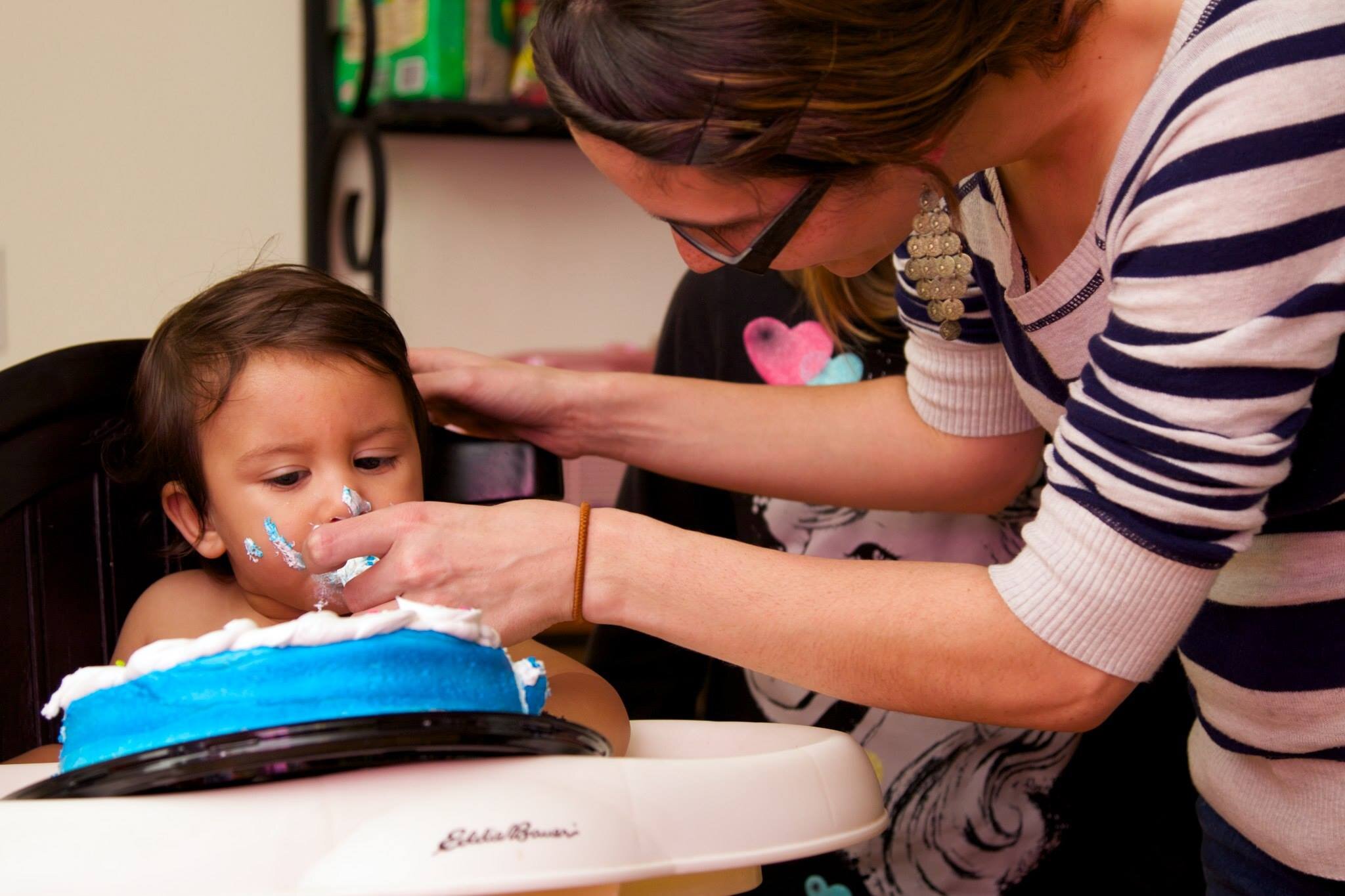 Let Your Family Know What To ExpectOne of the biggest things that leads to fear is the unknown. We fear things because we don't understand them. This is why it's so important for us to talk to our families about what they can expect as we blend cultures.During the week of my wedding mine and my husband's family got together. I don't know who was more nervous... me or them.My family had so many things to learn that week. Their were new traditions, new customs, new languages, and new people.At the end of the day, the thing that helped the most was talking. They needed a safe place to ask questions. The more we all talked, the more comfortable they all became.
Let Your Family Know What To ExpectOne of the biggest things that leads to fear is the unknown. We fear things because we don't understand them. This is why it's so important for us to talk to our families about what they can expect as we blend cultures.During the week of my wedding mine and my husband's family got together. I don't know who was more nervous... me or them.My family had so many things to learn that week. Their were new traditions, new customs, new languages, and new people.At the end of the day, the thing that helped the most was talking. They needed a safe place to ask questions. The more we all talked, the more comfortable they all became.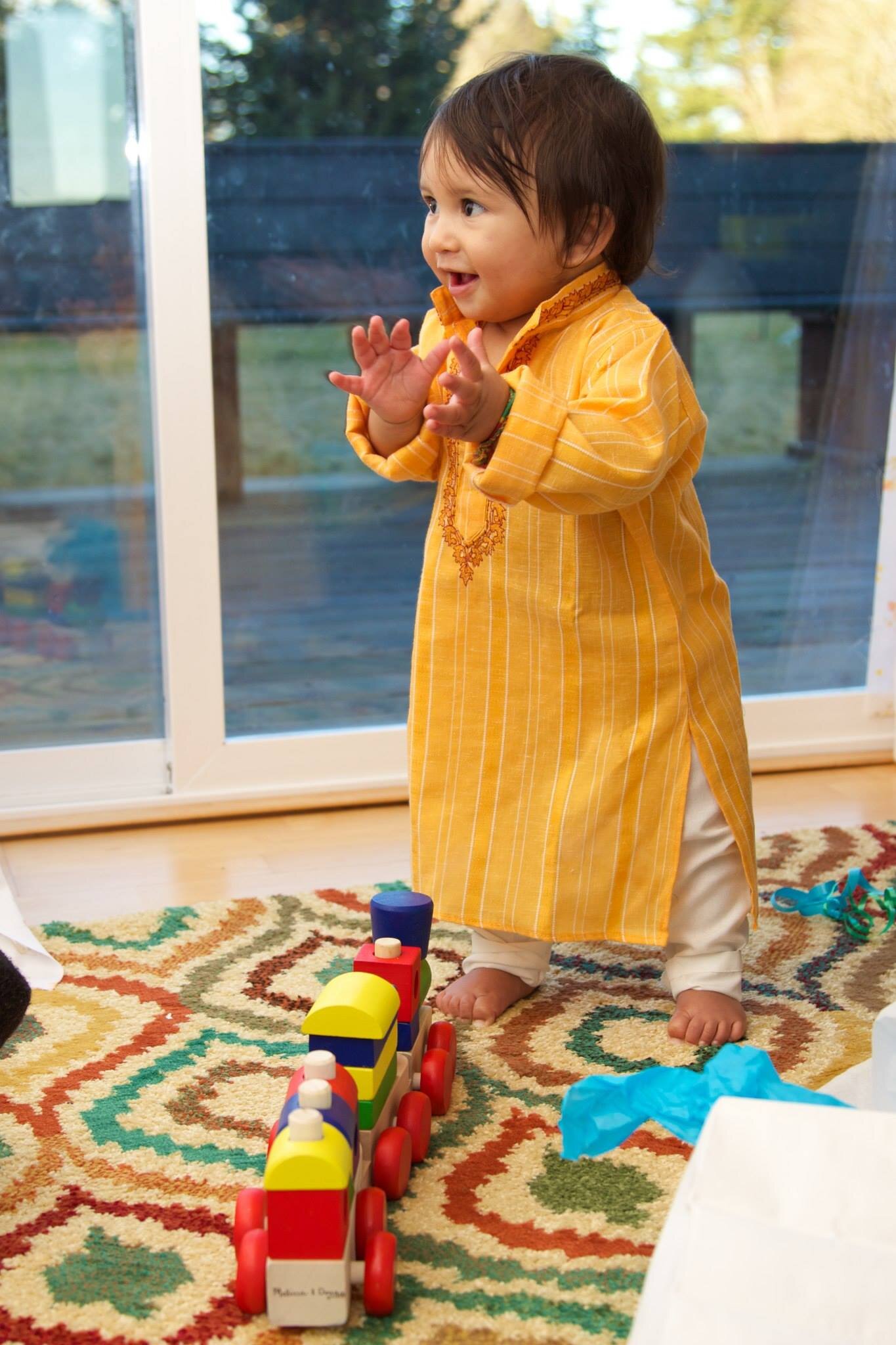 Encourage Your Kids To Teach Them About Their CultureMy kids love teaching people about their traditions and what better way to learn about something new than from a bunch of cute kids.When we eat Indian food in front of my family, my kids teach my family how to use their hands. They show them the correct technique and how they like to do it. They've even started to teach my family little Telugu words they know! It gives them a sense of pride to be able to share something that means so much to them.How have you helped your family to be comfortable with a new culture?
Encourage Your Kids To Teach Them About Their CultureMy kids love teaching people about their traditions and what better way to learn about something new than from a bunch of cute kids.When we eat Indian food in front of my family, my kids teach my family how to use their hands. They show them the correct technique and how they like to do it. They've even started to teach my family little Telugu words they know! It gives them a sense of pride to be able to share something that means so much to them.How have you helped your family to be comfortable with a new culture?
How Can You Teach Your Biracial Child To Be Proud Of Who They Are
Teaching Your Biracial Child To Be Comfortable In Their Own Skin
Being a child is hard. We always tease our kids about their "difficult" lives when they're throwing a tantrum over too much jelly on their sandwich, but hey. While the jelly dilemma is full of toddler drama, kids really do face some difficult challenges.
As a child, they don't know who they are and there is an inevitable realization for them. One day, they're going to wake up and realize they're different from their friends. As a biracial child or a child in an intercultural family, they're going to realize they don't like their friends or don't sound like them.
My husband went through his inevitable realization after he moved to the US from India...
While my mother in law was finishing nursing school, my husband lived with his relatives in India. After a few years and a nursing degree, he moved home to his parents. At the time, Telugu was his first language. He understood English, but he was more comfortable with Telugu as that was what he had been speaking for the last few years.
He was both excited and terrified to start school. He knew right away that he was different from his friends, but the idea of making new friends was all he could think about.
On my husband's first day of school, he was asked to tell the class about himself. He started to tell everyone about his kukka (dog) when they erupted into laughter. They started teasing him and asking why he talked funny.
In that moment my husband made a choice. He didn't want to be different than his friends and stopped speaking in Telugu in front of anyone, but his family. He even lost his accent as soon as he could.
He was only four or five years old when this happened. As a little boy he knew that there was something different about himself and was embarrassed. As an adult, he still regrets that. He still speaks Telugu, but no where near what he could have if he had made a different decision and continued speaking it fluently.
As the parents of biracial children, it's our responsibility to teach them how valuable their differences are. Those differences are what make up our beautiful children and we need to find a way to teach this to them. Here are 3 ways to encourage children to love themselves as the unique and biracial children that they are.
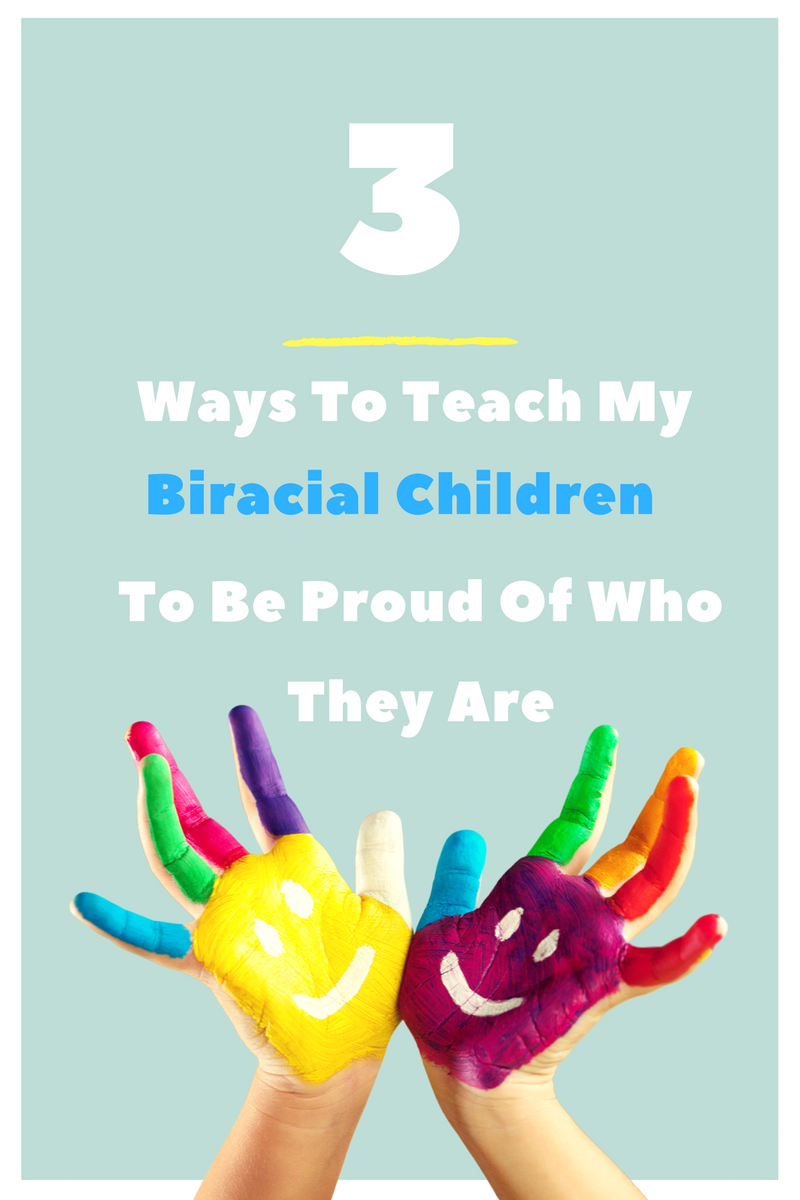
Surround Your Child With Diversity
Your child needs to be surrounded with diversity. They need to understand that they live in a diverse world and not feel like the only biracial child around.[tweetthis display_mode="box"]The more diversity your children are exposed to, the more comfortable they are with themselves. #aiwtribe #mkbkids [/tweetthis]You can do this by showing diversity in their books, food, friend groups, school, movies, and more. This doesn't just mean their own culture. They need to be exposed to multiple cultures because it creates an environment of acceptance rather than intolerance.Plus, it's exciting! It's always fun to learn about new cultures and the more they learn, the more they're going to want to teach their friends!
Reject Negative Messages About Biracial Kids
It's easy for kids to start believing the messages that society tells them. Society tells them they aren't good enough. As their parents, it's your job to tell them they're amazing as they are every day. Build their confidence now so they can face negative racial messages later.The more comfortable your children are with themselves, the more likely they are to educate ignorant people rather than respond in anger. People are going to say mean and negative things. As much as you would love to prevent your child from dealing with it, there's nothing you can do. What you can do is teach them how to respond.Their confidence will help them to challenge the ignorant statement rather than let it make them feel bad about themselves.
Encourage Your Child To Share Their Culture With Their Friends
Parents need to bridge the gap between encouraging their children to be comfortable in their own skin to becoming proud of what makes them unique. This can happen by showing them how fun it is to share their culture with their friends.You can have a special night where you have your kids invite their friends over for a special feast that includes traditional meals, invite them to a local cultural event, or watch a family friends foreign film together.When a child is proud of something, they want to shout it from the roof tops! They can't wait to tell special people in their lives about it. Culture should be the same way. If you're child is still uncomfortable with the fact their different from their friends, you may have to be the one encouraging them.Start by taking your entire family to a fun event that shows off your culture. Ask them if they want to bring someone. If they don't it's ok. Give them time. The more common it becomes for your family to do these things, the more comfortable they'll become and the more likely they'll want to show it off to their friends.
How are you teaching your kids to be proud of what makes them unique?
What Your Biracial Child Brings To School For Lunch Reveals More Than You Think
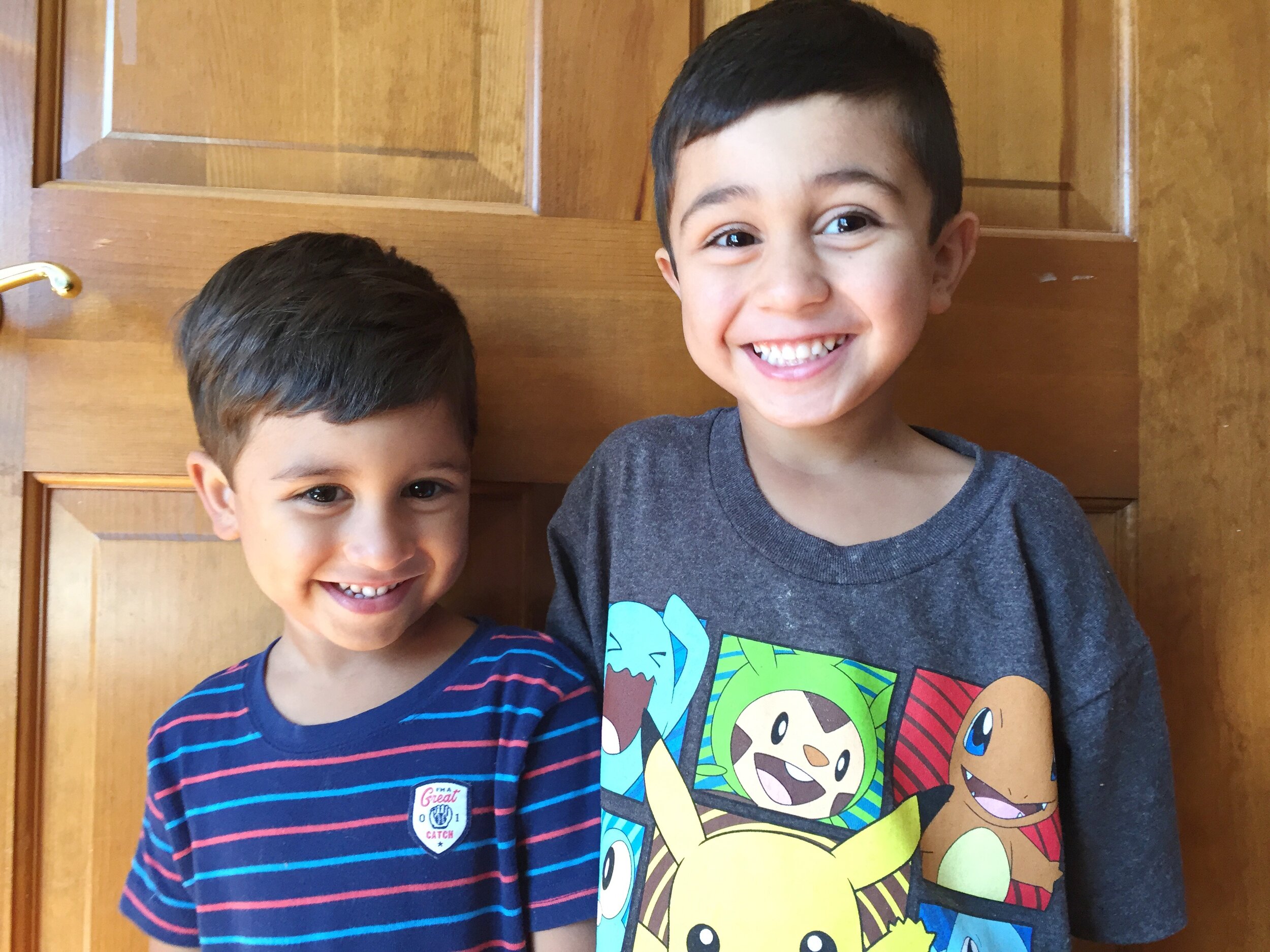
What Your Biracial Child Brings To School For Lunch Reveals More Than You Think
Over the last few years, my oldest son Liam has developed a huge love for leftovers. I don't know what it is, but every day around lunch time he asks what left overs we have. If by some chance we're out, he begs me to make leftovers...He doesn't just want a quick sandwich, he wants good food. He wants me to list out all the leftover options and gets excited to choose. I guess it's kind of like an international buffet at our house. We usually have pasta or Indian food like chicken curry. He's so obsessed with left overs that he started asking if he could bring left overs to school while we were visiting his cousins.Mom, will you send me left overs when I go to first grade next year?Now, his cousins are half Indian just like my kids are. They understand the multiracial dynamic because they're living it too! They're currently in elementary school and have plenty of thoughts on bringing left overs to school!
Their cousins are very comfortable in their biracial identity.
They've been to India, understand some Telugu, wear Indian clothes to events, and so on. They're also blessed with a momma that makes Indian food constantly and a daddy who makes comfort American food.I guess I assumed they'd want to bring their favorite dishes to school with them, but when I started asking them their answers surprised me.One of them told me they bring Indian food to school every single day. I wasn't surprised about this one because I've seen her devour a plate of tandoori chicken and I know how much she likes it.However, the other two said they won't bring Indian food to school and went on to tell me what their classmates have said about it in the past. Indian food has a distinct smell and their friends made fun of it. They hysterically laughed asking how they could eat that stuff.They only endured their friends bullying one time and decided then and there that they wouldn't bring Indian food to school anymore. Now, these kids love Indian food, but it wasn't worth being made fun of.
You guys, kids can be mean.
It broke my heart that they don't bring Indian food to school because of what people may say.I looked to their sibling and asked why she doesn't let her friend's bullying stop her from bringing Indian food to school. Her response was beautiful.I don't care what they say. At least I eat my favorite food every day.Boom! She hardly flinched when she said that and it's stuck with me since. I want my boys to have the same approach.As biracial kids, it's hard to be set apart. While most kids bring a PBJ to school, some kids bring traditional Indian left overs. There's nothing wrong with that! They bring what they would normally eat at home and it should be enough.It breaks my heart that kids bully each other over things they just don't understand. They look at an international dish and assume it's gross because they're not used to it.I hope and pray my kids won't let their friends determine what they bring to school for lunch.
I hope their pride and confidence in who they are helps them shrug off friend's comments.
This is why it's so important to me to have people over for Indian food and to eat with our hands. It shows our kids we won't grab a utensil just because our own friends may say something. Traditionally, you eat Indian food with your right hand in India and we do the same thing in out family.We also offer our kids and their friend's Indian treats during the day. Then we're right there if their friends say something and can gently encourage our kids to explain what it is and offer their friends some.Growing up a biracial child can bring about some unique challenges, but as a parent, I hope I can help them to build a strong identity that isn't rocked by what other people ignorantly say.
Have your kids every experienced this? If so what did you do?
If you like this, then check out this post!

How Can Schools Embrace Diversity

How Can Schools Embrace Diversity
Focus On All Major Holidays
During Holi (an holiday celebrated in India), my Facebook feed went crazy! My friends in India and the US were celebrating. Colleges in the US were even celebrating the colorful holiday by taking the colored powder to the lawn and having a great time! However, the one place I didn't see students celebrating or even talking about it was in elementary schools. They missed a huge opportunity to teach kids about India. Schools say they don't celebrate most holidays because of the religious ties to them. Just because you talk to your students about a holiday in India doesn't mean you need to convert them to hinduism while you're at it. By teaching students about major holidays celebrated around the world, you make students from those countries feel accepted and normal. You're also opening up your student and teacher's minds about something different to them.
Ask Questions Instead Of Avoiding Situations
I recently heard about a school where the principle will avoid saying international student's last names. During an assembly, he will list off first and last names until he gets to them and then he just uses their first name... Do you think that student feels normal or accepted when their own principle is too embarrassed to try and say their last name? No. All he had to do is get to know his students and ask them. By asking how to say their last name correctly, the student can see that the principle cares. Often times, teachers and adults will avoid topics because they're embarrassed. It only leads to students feeling ostracized and abnormal. Instead, they should be facing those situations head on and educate themselves.
Teacher Trainings
Teachers need to be educated on their students. They need to understand who they are, where they came from, and general religious practices. These trainings are the perfect time for teachers to ask their questions without a fear of saying the wrong thing. As teachers become more comfortable with different cultures, their teaching style will change. You need to know your students to know how you can teach them and how to really speak into their lives. --We need to bridge the cultures gap at home and in our schools. Diversity needs to be what's normal for our children, rather than teaching them to avoid talking about what makes us different.
What else can schools do to embrace diversity?
My Favorite Intercultural Posts
 One of my favorite things to talk about with all of you is intercultural relationships. My family and I have experienced things we never expected in the last six years. Our intercultural experiences have even taught all of you a few things. Here are a few of my top favorites!
One of my favorite things to talk about with all of you is intercultural relationships. My family and I have experienced things we never expected in the last six years. Our intercultural experiences have even taught all of you a few things. Here are a few of my top favorites!  12 Things Parents Of Mixed Race Kids HearPeople have no shame when it comes to asking strangers personal questions. They range from funny to I can't believe you just asked me that! Check out this post to hear some of the questions we've been asked and I'm sure you have been asked more than half!
12 Things Parents Of Mixed Race Kids HearPeople have no shame when it comes to asking strangers personal questions. They range from funny to I can't believe you just asked me that! Check out this post to hear some of the questions we've been asked and I'm sure you have been asked more than half! Can You Prevent A Dominant Culture From Taking Over In An Intercultural RelationshipWhen you fall in love with your loved one, blending cultures isn't something you think about right away. It comes later and then you have to figure out how to blend two distinct cultures. Sometimes it's easy, but it's usually something that requires a lot of work. It's common for one culture to dominate in a family if you're not careful. Here are a few things you can do to prevent that.
Can You Prevent A Dominant Culture From Taking Over In An Intercultural RelationshipWhen you fall in love with your loved one, blending cultures isn't something you think about right away. It comes later and then you have to figure out how to blend two distinct cultures. Sometimes it's easy, but it's usually something that requires a lot of work. It's common for one culture to dominate in a family if you're not careful. Here are a few things you can do to prevent that.  Am I Racist Against My Own CultureAfter marrying my husband, I fell in love with Indian culture. It's vibrant, beautiful, and all about food and family. As I fall in love with it more, I've been accused of being racist against my own culture. I didn't realize my love for one culture would portray racism against my own.
Am I Racist Against My Own CultureAfter marrying my husband, I fell in love with Indian culture. It's vibrant, beautiful, and all about food and family. As I fall in love with it more, I've been accused of being racist against my own culture. I didn't realize my love for one culture would portray racism against my own.  Culture Clash Wednesday #5 Personal SpaceIf you follow me on Instagram, you have all seen the pictures of my kids touching my face. I. Can't. Stand. It. It used to be adorable and heart warming. Now I get bloody noses because they sneak into my bed and slap me in the face in the middle of the night, trying to "cuddle" my face. If parenting has taught me anything, it's that I no longer have the right to personal space...
Culture Clash Wednesday #5 Personal SpaceIf you follow me on Instagram, you have all seen the pictures of my kids touching my face. I. Can't. Stand. It. It used to be adorable and heart warming. Now I get bloody noses because they sneak into my bed and slap me in the face in the middle of the night, trying to "cuddle" my face. If parenting has taught me anything, it's that I no longer have the right to personal space...  3 Signs You're In An Intercultural RelationshipDid you know you're in an intercultural relationship? Really, you are. You may not believe me, but after reading this post, you will see how true it is. There are three major signs that will guarantee you are in one.
3 Signs You're In An Intercultural RelationshipDid you know you're in an intercultural relationship? Really, you are. You may not believe me, but after reading this post, you will see how true it is. There are three major signs that will guarantee you are in one.  How To Survive A Relationship With Your Mother Or Daughter In LawOften times, we focus on how difficult our mother in laws can be, but have you ever thought about how it must be for them? As a mother of three boys, I can't even imagine how I will be when they bring girls home. Much less marry them! Read this post and try to put yourself in their shoes.
How To Survive A Relationship With Your Mother Or Daughter In LawOften times, we focus on how difficult our mother in laws can be, but have you ever thought about how it must be for them? As a mother of three boys, I can't even imagine how I will be when they bring girls home. Much less marry them! Read this post and try to put yourself in their shoes.  Too White To Be Indian And Too Indian To Be WhiteAs a biracial adult and as a part of an intercultural marriage, I find myself being pulled in two different directions. On one hand, I am trying to appease Indian culture and traditions, but on the other I'm trying to appease a culture I grew up with. Can you relate to this? If so, this post is for you.
Too White To Be Indian And Too Indian To Be WhiteAs a biracial adult and as a part of an intercultural marriage, I find myself being pulled in two different directions. On one hand, I am trying to appease Indian culture and traditions, but on the other I'm trying to appease a culture I grew up with. Can you relate to this? If so, this post is for you.

